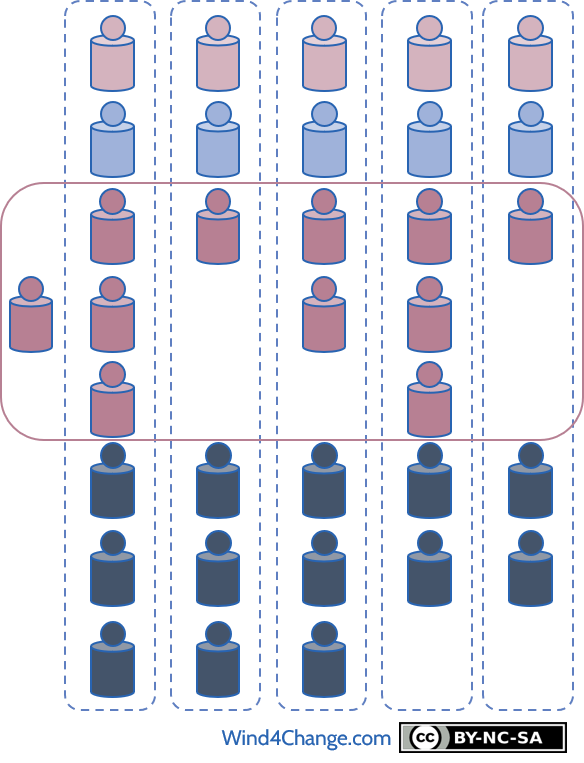What are the definition and the characteristics of a Chapter and a Guild inspired by the Spotify Model in Agile at Scale? Furthermore, what are the roles of Chapter Manager and Guild Leader in Chapter and a Guild from the Spotify Model ?
What is a chapter from the Spotify Model?
A Chapter is a group of members of a Tribe having the same skills either functional of technical. As a matter of fact, the purpose of a Chapter is to develop skills of its members and to support sharing and consistency. To illustrate, Henrik Kniberg defines the Chapter as the glue between the Squads.
Furthermore, what are the characteristics of a Chapter ?

- Global like the Tribe. This is a specification of this Return of Experience due to the size and the global configuration of the organization. But, it is not specified in the Spotify Model.
- All Tribe Members belong to a single Chapter and all the skills are covered either functional or technical
- There is a capacity, usually 10% of the Chapter Members time, that is secured for the contribution to the Chapter
- Ceremonies and Artifacts are the same like a Squad
What is the role of the Chapter Manager ?
- Facilitates the Chapter
- Is the Manager of the Chapter Members:
- Is their people developer
- Supports their career progress
- Takes care of administrative aspects
- Does not involve in delivery as a target
- In this sharing contrary to the Spotify Model, the Chapter Manager is a full time role as soon as there are more than 12 Chapter Members.
At last, what is a Guild from the Spotify Model?
A group of members across Tribes willing to share knowledge and good practices either functional or technical. In other words, it is a community of interest. So, it is complementary to Chapters to boost sharing.
A Guild looks like a Chapter with the following differences:
- It is based on free will to participate. Anybody can join or leave whenever.
- It is across Tribes
- It may be temporary depending on the needs for sharing
A Tribe Member plays the role of Guild Leader and facilitates the Guild in addition to his/her delivery role.
What’s next? Learn more about Agile at Scale
Check my other posts about Agile at Scale:
- Review my posts on Agile at Scale foundations:
- What are
- What are the team topologies?
- How to synchronize Agile Squads in Agile at Scale when there are dependencies?
- Check another of my posts introducing Agile at Scale that leverages the book “Doing Agile Right”.
- Review my post on the Agile best practices from the GAO the Government Accountability Office from the USA.
- Read my posts on advanced topics around Agile at Scale:
- What are Leagues in Agile at Scale?
- How to design Agile Squads so they are aligned on the Value Chains.
- Why going for horizontal management? What does it mean and what is the value?
- How roles are reallocated with Agile at Scale?
- Check my posts on project management in Agile at Scale
- What is the impact of Agile on Project Management?
- How does Project Portfolio Management change with Agile at Scale?
- Then, how does Cost of Delay Divided by Duration (CD3) contribute to Agile at Scale?
- How does Beyond Budgeting support Agile at Scale?
- Can an Agile Project be fixed price?
- How to manage Release Management in Agile?
- Review my posts on how to forge a good strategy:
- What are competition and competitive advantage?
- What is a good strategy?
